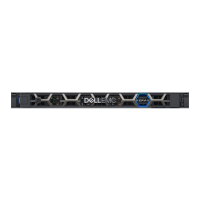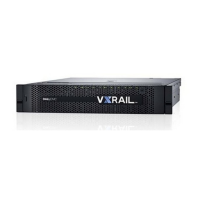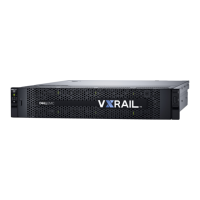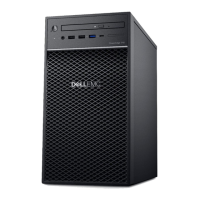32 | Network Planning Guide
© 2018 Dell Inc. or its subsidiaries
Step 8.
Configure the VLANs for your VM Networks (Rows 39-41) on the switch ports.
Step 9.
Configure the switch uplinks to allow the External Management VLAN (Row 1) and VM Network VLANs
(Rows 39-40) to pass through. Include the optional VxRail Witness Traffic Separation VLAN (Row 50) on
the uplinks if required.
Step 10.
Configure the inter-switch links to allow the all VLANs to pass through if deploying dual switches
Confirm Your Data Center Network
Upon completion of the switch configuration, there should be unobstructed network paths between the switch ports and the ports
on the VxRail nodes, and the VxRail management network and VM network should have unobstructed passage to your data center
network. Before forming the VxRail cluster, the VxRail initialization process will perform a number of verification steps, including:
• Verify switch and data center environment supportability
• Verify passage of VxRail logical networks
• Verify accessibility of required data center applications
• Verify compatibility with the planned VxRail implementation
Certain data center environment and network configuration errors will cause validation to fail, and the VxRail cluster will not be
formed. When validation fails, the data center settings and switch configurations must undergo troubleshooting to resolve the
problems reported.
Confirm the settings on the switch, using the switch vendor instructions for guidance:
1. Confirm that IPv4 multicast (VxRail release prior to 4.5.0) or unicast (VxRail Release 4.5.0 and beyond) and IPv6 multicast are enabled
for the VLANs described in this document.
2. If you have two or more switches, confirm that IPv4 multicast/unicast and IPv6 multicast traffic is transported between them.
3. Remember that external management traffic will be untagged on the native VLAN on your switch. If this has changed, then the switches
and/or ESXi hosts must be customized with the new VLAN.
4. Remember that internal device discovery network traffic will use the default VLAN of 3939. If this has changed, then all ESXi hosts must
be customized with the new VLAN, or device discovery will not work.
5. Confirm the switch ports that will attach to VxRail nodes allow passage of all VxRail network VLANs
6. Confirm the switch uplinks allow passage of VxRail networks for external users
If you have positioned a firewall between the switch(es) planned for VxRail and the rest of your data center network, be sure the
required firewall ports are open for VxRail network traffic
Confirm your firewall settings:
1. Verify VxRail will be able to communicate with your DNS server
2. Verify VxRail will be able to communicate with your NTP server
3. Verify your IT administrators will be able to communicate with the VxRail management system
4. If you plan to use a Customer-Supplied vCenter, verify open communication between the vCenter instance and the VxRail managed hosts
5. If you plan to use a third-party syslog server instead of Log Insight, verify open communication between the syslog server and the VxRail
management components
6. If you plan to deploy a separate network for ESXi host management (iDRAC), verify your IT administrators will be able to communicate
with the iDRAC network
7. If you plan to use an external Secure Remote Services (SRS) gateway in your data center instead of SRS-VE deployed in the VxRail
cluster, verify open communications between VxRail management and the SRS gateway.
Refer to Appendix B for information of VxRail port requirements

